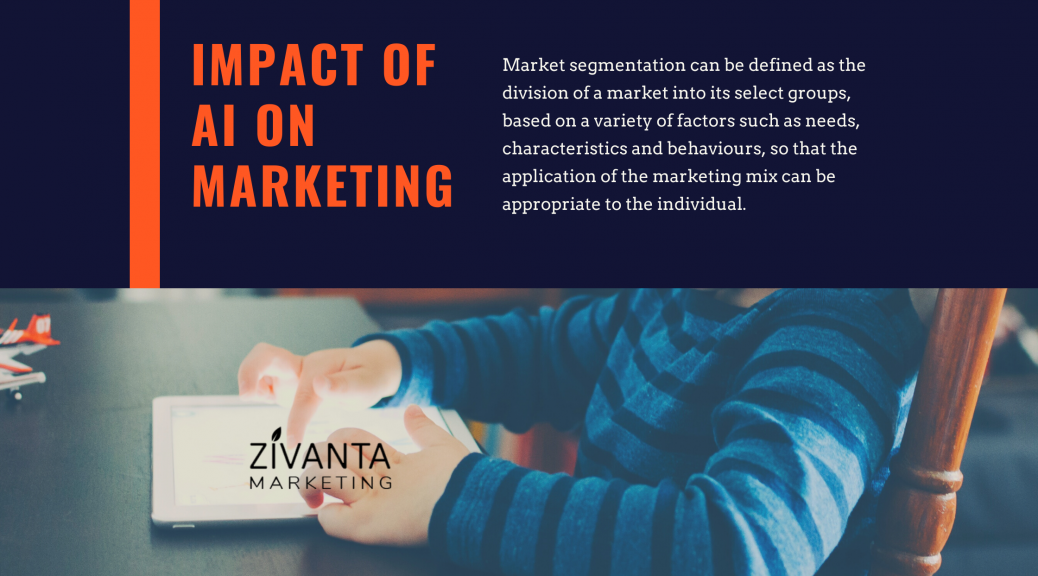Do you want to learn a new skill that can boost your career prospects and solve real-world problems?
If yes, then you might want to consider learning a programming language. Programming languages are the tools that allow us to communicate with computers for developing software applications. They can be used for various purposes, such as web development, data analysis, artificial intelligence, gaming, and more.
But with so many programming languages out there, how do you choose which one to learn? Which programming language is best for getting jobs this 2024? Which programming language is going to remain popular in the future?
In this article, we aim to answer all these questions and more. Stick around.
What Is ‘Programming Language’ In Simple Words?
A programming language is a set of rules and symbols that tells a computer what to do. It allows us to write instructions for the computer in a way that is easier for us to understand and modify. Thus it defines how the computer should execute those instructions and handle errors.
For example, if we want to make a calculator app, we can use a programming language to tell the computer how to perform calculations, display the results, and handle invalid inputs.
Now let’s learn about the varied types of programming languages and what they offer.
Types of Programming Languages
Based on various criteria, such as syntax, features, paradigms, or applications, programming languages fall under various categories and classifications. However, there is no definitive or universal classification, and some languages may belong to more than one type.
Here are some common types of computer languages with examples.
- Procedural languages: These languages follow a step-by-step approach to solve a problem, using variables, functions, loops, and conditional statements. They are easy to learn and implement, but they can become complex and hard to maintain for large programs.
Some examples of procedural languages are C and Pascal.
- Object-oriented languages: These languages use objects as the main building blocks of a program, where each object has its own data and behavior. Here objects interact with each other through messages, and inherit properties from other objects. This makes the code more modular, reusable, and extensible.
For example: Java, Python, C++, and Ruby.
- Functional languages: These languages focus on the output of functions rather than the state of variables. Functions are taken as first-class values. This means that they can be stored in data structures, considered arguments and returned as results. Functional languages avoid side effects and mutable data, which make them more expressive, concise, and reliable.
Some examples of functional languages are Haskell, Scala, Erlang, and F#.
- Scripting languages: These languages are designed to automate tasks, manipulate data, or enhance the functionality of other applications. They are usually interpreted rather than compiled, which makes them more flexible and portable, but also slower and less efficient.
For example: JavaScript, PHP, Perl, and Python.
- Markup languages: These languages are used to define the structure, presentation, or content of documents, such as web pages, e-books, or data formats. They use tags or symbols to annotate the text, which can then be processed by browsers, parsers, or other applications.
Some examples are HTML, XML, CSS, and TeX.
- Query languages: These languages are used to retrieve, manipulate, or analyze data from databases, data warehouses, or other sources. They use commands, expressions, or clauses to specify the criteria, conditions, or operations on the data.
Some common query languages are SQL, SPARQL, XQuery, and Datalog.
- Domain-specific languages: These languages are tailored for a specific domain, problem, or application, such as Mathematics, Statistics, Engineering, gaming, or music. They have a limited scope and vocabulary, but they are more expressive, concise, and efficient for their intended purpose.
For example: Matlab, R, Logo, and Swift.
- Multi-paradigm languages: These languages support more than one programming paradigm, such as imperative, declarative, functional, or object-oriented. They offer more flexibility and choice for the programmers, but they also require more skill and discipline to use them effectively.
Some examples of multi-paradigm languages are Python, Scala, and Kotlin.
Now as we step into 2024, the demand for specific programming languages continues to shift. You certainly have experience on programming, but are you ready for the future? Let’s explain.
Top 10 Programming Languages That The Industry Wants In 2024

In this ever-evolving landscape of data science and technology, staying agile and ahead on the latest programming languages is crucial for any aspiring or seasoned developer.
Here let’s explore the top 10 programming languages to learn this year, each playing a unique role in shaping the digital world.
- Python
Renowned for its simplicity and versatility, Python maintains its top spot. Widely used in web development, Artificial Intelligence (AI), data science, and automation, Python’s readability and extensive libraries make it a go-to language for both beginners and seasoned developers.
- JavaScript
Being the backbone of web development, JavaScript is indispensable. With it one holds the ability to develop dynamic web pages that are interactive too. This is what makes JavaScript a must-learn programming language. With frameworks like React and Vue.js dominating the scene, mastering JavaScript opens doors to powerful front-end development.
- Java
Java has stood the test of time and continues to be a force to reckon with. It powers Android app development and is a key player in enterprise-level applications. Learning Java provides a solid foundation for building robust, scalable, and cross-platform applications.
Apart from these top 3 types of programming languages, consider the underlying options to bolster your career for the future.
- C and C++
These stalwarts remain fundamental, especially in system programming and game development. C and C++ form the backbone of many high-performance applications, making them essential languages for those delving into low-level programming.
- Swift
For iOS app development, Swift is the language of choice. Its concise syntax and emphasis on safety make it one of the favorites among developers creating applications for Apple’s ecosystem. As the demand for iOS apps continues to rise, Swift maintains its relevance.
- Kotlin
Kotlin offers modern features and seamless inter-operability with Java and is an officially supported language for Android development. Developers looking to create Android apps efficiently are increasingly turning to Kotlin for its conciseness and expressiveness.
- PHP
Despite being around for decades, PHP remains vital for server-side web development. Powering popular content management systems like WordPress, PHP is a valuable addition for those focusing on web backend development.
- Matlab
Matlab is an essential language in scientific computing, engineering, and data analysis. Widely used in academia and industry, mastering Matlab is advantageous for professionals working in research and development.
- SQL
Structured Query Language (SQL) is indispensable for managing and manipulating databases. As data continues to be a driving force in technology, understanding SQL is crucial for anyone working with databases and data-driven applications.
- HTML
Is HTML a programming language? While not a programming language per se, HTML is the backbone of web development. Understanding HTML is a fundamental skill for anyone venturing into web design and development, as it forms the basis for creating web pages.
Staying relevant in the ever-changing tech landscape requires a strategic approach to learning programming languages. Whether you are a beginner or a seasoned developer, mastering these top 10 languages in 2024 will undoubtedly position you for success in the dynamic world of programming.
How Is Programming Shaping The Industry?
In the rapidly advancing landscape of technology, programming languages play a pivotal role in shaping various industry and job domains. As we look forward to 2024, understanding the synergy between programming skills and specific occupational sectors becomes imperative.
Let’s explore how proficiency in programming languages can significantly impact and elevate the following domains.
Navigating the Tech-Driven Professions
- Web Development
Languages such as Python, JavaScript, and HTML are indispensable in the realm of web development. As businesses aim to sustain, compete and enhance their online presence, web developers proficient in these languages are in high demand. Frameworks like Django (Python) and React (JavaScript) further amplify the significance of programming skills in this domain.
- Data Science
Python, with its robust libraries like Pandas and NumPy, is a powerhouse in the field of data science. As organizations leverage data to make informed decisions, professionals proficient in programming languages for data manipulation and analysis find themselves at the forefront of this burgeoning industry.
- Artificial Intelligence and Machine Learning
Python’s dominance extends to Artificial Intelligence (AI) and Machine Learning (ML) applications. TensorFlow and PyTorch, both Python-based, are widely employed in building and training sophisticated AI models. Mastery of programming languages in this domain opens doors to creating innovative solutions and contributing to the AI revolution.
- Mobile App Development
Swift and Kotlin emerge as key players in mobile app development, particularly for iOS and Android platforms, respectively. With the demand of mobile applications continually surging, programmers skilled in these languages are well-positioned to thrive in the dynamic and competitive app development industry.
- Cybersecurity
Programming languages like Python and Java are instrumental in cybersecurity efforts. Writing secure code, developing robust applications, and implementing effective security measures all rely on a solid understanding of programming. Professionals well-versed in these languages contribute to safeguarding digital assets and mitigating cyber threats.
- Cloud Computing
Languages like Java, Python, and JavaScript are integral in the field of cloud computing. Whether it’s building scalable applications or managing cloud resources, programming skills are a prerequisite for cloud engineers and architects. Proficiency in these languages is vital for optimizing cloud infrastructure and services.
- DevOps
In the world of DevOps, scripting languages such as Python and Shell are essential for automation and continuous integration/continuous deployment (CI/CD) processes. Professionals in DevOps roles leverage programming skills to streamline workflows, enhance efficiency, and achieve seamless collaboration between development and operations teams.
- Blockchain Development
Languages like Solidity (for Ethereum) and C++ find applications in blockchain development. As blockchain technology gains traction across various industries, programmers proficient in these languages are instrumental in designing and implementing decentralized solutions and smart contracts.
Now that programming languages are influencing a range of job domains, they’re forging a symbiotic relationship between technology and your chosen profession. Whether you’re aiming to be a web developer, data scientist, AI engineer, or exploring emerging fields like blockchain, mastering relevant programming languages is your pathway to success in the tech-driven workforce of 2024.
Which Programming Language Is Best For Your Career This 2024?

Programming languages are the tools that enable developers to create software, applications, websites, and more. However, not all programming languages are equally popular or in-demand in the job market. Some languages have more opportunities, higher salaries, and better prospects than others.
Therefore, it is important for aspiring programmers to choose the right language to learn and master.
5 Best Programming Languages – Get Yourself Job-Ready!
The following are some of the best programming language examples to keep an eye on and learn this 2024 for acquiring that competitive edge.
- Python
Python stands out as a versatile, easily graspable, and extensively applied language, well-suited for diverse domains including web development, data science, machine learning, artificial intelligence, and beyond. With a sizable and dynamic community, Python boasts an extensive collection of libraries and frameworks, contributing to its heightened demand across industries. In the United States, Python developers can anticipate an average salary reaching $115,000.
- JavaScript
As discussed in the earlier sections, JavaScript remains as one of the most popular computer languages for web development. This is because it enables dynamic and interactive features on web pages. JavaScript is also used for backend development, mobile development, desktop development, and more, thanks to its powerful frameworks and libraries such as React, Angular, Node.js, and Electron. In the United States, the average salary for JavaScript developers is around $110,000.
- Java
This stands out as a mature, reliable, and high-performance programming language extensively employed in diverse fields such as enterprise applications, web development, and mobile development. Recognized for its portability, scalability, security, and concurrency features, Java boasts a substantial and committed community, an extensive array of tools and frameworks, and significant industry demand. In the United States, Java developers can anticipate an average salary reaching $105,000.
- Go
Crafted by Google, Go emerges as a contemporary language tailored to tackle the complexities of modern software development. Characterized by speed, simplicity, and concurrency, Go is well-suited for constructing scalable and dependable systems, particularly in the realms of cloud computing, micro-services, and distributed systems. Bolstered by an expanding and passionate community, Go features a minimalist and expressive syntax, contributing to its heightened demand within the industry.
- TypeScript
TypeScript, an extension of JavaScript, introduces static typing and additional features to elevate the dependability, readability, and maintainability of JavaScript code. Compatible with JavaScript, TypeScript seamlessly integrates with any JavaScript framework or library. Its rising popularity among web developers is attributed to its ability to identify errors during compile time, enhance code quality, and provide robust support for large-scale projects. In the United States, TypeScript developers can anticipate an average salary of $120,000.
These are some of the best programming languages to learn in 2024 for getting jobs, based on their popularity, demand, salary, and future prospects. However, there are many other languages that are also worth learning, such as Kotlin, Swift, Rust, C#, and R.
Ultimately, the programming language that you wish to learn depends on your personal goals, interests, and preferences. The most important thing is to keep learning and improving your skills, as programming languages are constantly evolving and changing.
Other Career Options to Consider
Starting your coding journey requires you to put thoughtful consideration on whether your career goals remain aligned with some of the best programming languages in the world. Your choice should reflect your career interests and the specific realm of software development you aspire to enter.
As you venture into coding, consider the following programming languages tailored to various career paths.
Let’s distill the aforementioned options into a concise overview:
- Front-end Web Development
Explore JavaScript and TypeScript for creating dynamic and interactive user interfaces.
- Back-end Web Development
Delve into the versatility of JavaScript, TypeScript, Python, Go, Elixir, and C# to master server-side development.
- Mobile App Development
Choose Swift for iOS, Java for Android, or C# for cross-platform app development to craft innovative mobile applications.
- Game Development
Focus on C# to enter the realm of game development, leveraging its capabilities for creating engaging and immersive experiences.
- Desktop Applications
Master Java, Python, JavaScript, or TypeScript based on your preferences, as each excels in developing desktop applications for diverse purposes.
- Systems Programming
Explore the intricacies of C, Rust, and Go to delve into low-level programming, shaping the core functionality of various systems.
Ultimately, the best programming language for you is the one that aligns with your career aspirations and the type of software development that ignites your passion. Choose wisely and embark on a journey of skill acquisition that resonates with your professional goals.
What Are The Future Programming Languages For 2025?
As we approach 2025, the ever-evolving landscape of technology hints at the emergence of new programming languages poised to shape the future of software development.
Let’s delve into the potential programming languages that are anticipated to gain prominence in 2025:
Exploring the Next Wave of Innovation
- Rust
The language is gaining fast popularity nowadays for its uptight focus on performance, memory safety, and zero-cost abstractions. Rust is thereby positioned to become a key player in systems programming. With its emphasis on preventing common programming errors, Rust is expected to attract developers seeking both efficiency and robust security features.
- Julia
Julia has gained recognition for its prowess in scientific computing and data analysis. With high-performance computing being in demand in the industry, Julia’s speed and ease of use make it a strong contender for applications in fields such as finance, engineering, and research.
- TypeScript
Building on the foundation of JavaScript, TypeScript introduces static typing to enhance code quality and developer productivity. Its growing adoption in web development, particularly with popular frameworks like Angular, positions TypeScript as a language to watch in the evolving ecosystem of front-end development.
- Haskell
Haskell, a functional programming language, is gaining traction for its strong type system and concise syntax. With an emphasis on mathematical reasoning and purity in functions, Haskell is anticipated to attract developers looking to build robust and maintainable codebases.
- Elm
This functional programming language is specifically designed for front-end web development. Focused on simplicity and reliability, Elm is gaining attention as a language that enables developers to build scalable and maintainable user interfaces, addressing challenges commonly faced in large-scale web applications.
- Kotlin
While Kotlin is already established, its versatility and interoperability with Java make it a language with a promising future. With continued support from major frameworks and its adoption for Android app development, Kotlin is likely to maintain and expand its influence in the software development landscape.
- Crystal
Crystal combines the elegance of Ruby with the performance of languages like C. Its focus on developer-friendly syntax and high-performance execution makes it an intriguing option, particularly for building fast and reliable applications.
- Elixir
Elixir, built on the Erlang virtual machine, is gaining popularity for its scalability and fault-tolerance. As the demand for concurrent and distributed systems rises, Elixir’s unique features position it as a language to watch in the development of robust and resilient applications.
- Dart
Dart, backed by Google, is the programming language powering Flutter, a framework for building cross-platform mobile applications. As Flutter gains momentum, it is expected that Dart will play a significant role in the mobile app development landscape.
- Racket
Racket, a descendant of Scheme and Lisp, is gaining attention for its extensibility and focus on language-oriented programming. With its unique approach to language design, Racket is anticipated to attract developers exploring unconventional and expressive programming paradigms.
The future of programming languages for 2025 promises a diverse and dynamic landscape. Developers looking to stay at the forefront of innovation should keep an eye on these languages, each offering unique strengths and capabilities to address the evolving needs of the software development industry.
Synopsis
How do you choose the best programming language to learn in 2024? This blog helps you answer this question by introducing the concept of programming languages, explaining their different types and giving some examples of each.
Here we have also enlisted some of the most popular programming languages to learn in 2024, such as JavaScript, HTML/CSS, Python, C, C++, and Swift, and described their features and advantages. Finally this article aims to help you pick the right programming language for your goals and interests.
Get encouraged and learn new programming skills this 2024 to boost your career prospects and solve some real-world problems!
References
- Gabbrielli, M. and Martini, S., 2023. Programming languages: principles and paradigms. Springer Nature.
Link: https://link.springer.com/book/10.1007/978-1-84882-914-5 - Wassberg, J., 2020. Computer Programming for Absolute Beginners: Learn essential computer science concepts and coding techniques to kick-start your programming career. Packt Publishing Ltd.
- Srinath, K.R., 2017. Python–the fastest growing programming language. International Research Journal of Engineering and Technology, 4(12), pp.354-357.
Link: https://www.irjet.net/archives/V4/i12/IRJET-V4I1266.pdf - Wexelblat, R.L. ed., 2014. History of programming languages. Academic Press.
- Sebesta, R.W., 2012. Concepts of programming languages. Pearson Education, Inc.












 Airbnb has launched a global intiative to provide free/subsidized housing to 100,000 frontline health workers and first responders battling the COVID pandemic. Hosts can opt in through the Airbnb’s Open Home platform and offer their properties free of cost.
Airbnb has launched a global intiative to provide free/subsidized housing to 100,000 frontline health workers and first responders battling the COVID pandemic. Hosts can opt in through the Airbnb’s Open Home platform and offer their properties free of cost.




